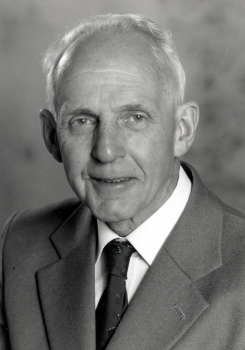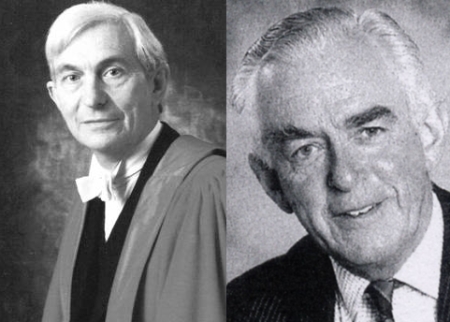Cardiac Catheterisation and Cardiac Surgery

In Ian Hill's cardiac laboratory, Dr Ken Lowe was one of the first in Scotland to use right heart catheterisation in the pre-operative assessment of patients with rheumatic and congenital heart disease (DUNUC 4186)
In the 1930s Ian Hill had done important work on electro- cardiography with Frank Wilson at the famous 'Heart Station' at Ann Arbor in Michigan and with C J Rothberger in Vienna.
In 1950 he explained the new unipolar V leads to British doctors through a highly influential article in the Lancet. Hill's first research priority on arriving in Dundee the following year was to set up a cardiac diagnostic laboratory, particularly important because of the need to develop cardiac surgery.
The first cardiac catheterisation had been performed (on himself) by Werner Forsmann in Germany in 1929, his aim being to find a safe way to inject adrenaline into the right atrium for cardiac resuscitation. After using up all his veins with eight further catheterisations, contact with the leading surgeon in Berlin to see if any further use could be made of the procedure led only to the reaction that he "ran a clinic not a circus"!
The technique was refined more formally in the 1940s by Cournand and Richards at Columbia in New York, who realised that this was 'the key in the lock'. In the UK, John McMichael and Peter Sharpey-Schafer had pioneered cardiac catheter studies at Hammersmith Hospital in London. After the war Dr Ken Lowe acquired expertise in the technique there when measuring renal blood flow and in the diagnosis of congenital heart disease; he later introduced angiocardiography. Lowe was appointed Senior Lecturer in Medicine at the University of St Andrews in 1952, and was able to bring these and other research techniques to Dundee.
With the appointment in 1953 of Dr Donald Emslie-Smith and three years later Dr Hamish Watson as cardiac registrars, the Dundee unit's research interest focused initially on intracardiac electrocardiography (IEG) using electrode-tipped catheters. The patterns in the normal heart, right ventricular hypertrophy, bundle branch block and ventricular pre-excitation were studied. Simultaneous recording of the IEG and pressure pulse during catheterisation of patients with pulmonary stenosis helped in identifying the site of the obstruction in the right ventricular outflow tract.

Dr K G Lowe (private collection)

Donald Emslie-Smith and Hamish Watson (Tayside Medical History Museum)
He was the first in the UK to perform atrial septostomy as a life-saving palliative procedure in babies born with transposition of the great arteries.
The most exciting intracardiac work for Hill's team was the search for evidence of conduction along the bundle of His. This was eventually found and recorded in a teenage girl with Ebstein's anomaly of the tricuspid valve. Publication of the findings in the American Heart Journal in 1967 was later cited by Science as one of the most influential scientific reports in a review of some 4,000 articles on important cardiovascular and pulmonary subjects. With more sophisticated equipment available, a flurry of research activity on 'His bundle recording' quickly followed in America, and led in time to ablative therapy of arrhythmias.

Sir Ian Hill's original unipolar leads - the first unipolar ECG lead system used in Britain DUNUC 4236
You can find out more about Frank Brown and see photographs of an open heart valve replacement at DRI in the 1960s at the Delicate Operation exhibition website.
In time, dwindling numbers of suitable patients and the need for centralising expertise for more complex recurrent cases led to open heart surgery ceasing in Dundee, although mitral valvotomies continued until shortly before Ninewells Hospital opened in 1974. Walker went on to become an international figure in the field of peripheral vascular disease. He established with Dr Vance Spence one of the first vascular laboratories in the UK, and was elected President of the Association of Surgeons of Great Britain and Ireland in 1984.
Back to exhibition homepage